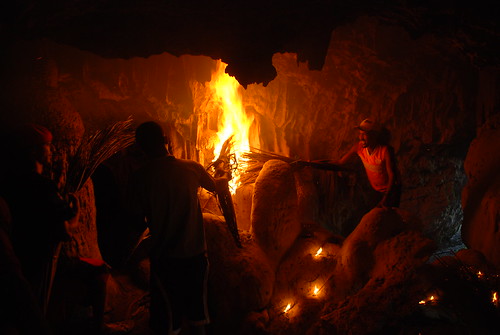
Light bulbs??
Posted on 07/13/2011 9:02:50 PM PDT by Steelers6
The new squiggly fluorescent bulbs 51% The old incandescent bulbs I've used for years 48% Total votes: 427
--------------------------------------------------------------------------------
The new squiggly fluorescent bulbs 50%
The old incandescent bulbs I’ve used for years 49%
Total votes: 441
So this poll is about as unscientific as if it were taken in Berkeley or Madison.
I have yet to see a single one of the squigglies in ANY home I've been in for the past year...and I get around, baby....LOL.
Leni
You'll be hunted down and shot if found with an incandescent bulb in a few years.
No option for kero lanterns...sigh.
I use both kinds plus some tube fluorescents. Squigglies are esp. nice for spots where you don’t want all that heat from Edison bulbs.
Switching to full spectrum incandescent....have a mix of squiggly’s and those, and some regular incandescents...
http://www.theamericangym.com/lightsport.htm
Light Emitting Diodes (LED’s) have been around for a long time, but have been introduced as a legitimate therapy option in recent years. LED’s are similar to lasers in that as they can emit the same light but differ in the way that the light energy is delivered. Lasers are focused beam single-wavelength light emitters that can be intense enough (a ‘hot’ laser) to burn/cut tissue or ‘cold’ enough to only have light therapy effects. LED’s do not deliver enough power to damage the tissue, but they do deliver enough energy to promote natural self healing and pain relief. With a low peak power output but high duty cycle (50%), the LED’s provide a much gentler delivery of the same healing wavelengths of light as does the laser but without the same risk of accidental eye damage that lasers do.
LED’s are merely convenient devices for producing light at specific wavelengths, and in addition to the one already cited, several other studies establish that it is the light itself at specific wavelengths that is therapeutic in nature and not the machine which produced it. All biological systems have a unique absorption spectrum which determines what wavelengths of radiation will be absorbed to produce a given therapeutic effect. The visible red and invisible infrared portions of the spectrum have been shown to have highly absorbent and unique therapeutic effects in living tissues.
LED’s also allow the light beam to spread out instead of being a pinpoint light beam and they generate a broader band of wavelengths than does the single-wavelength laser. The wide-angle diffusion of the LED confers upon it a greater ease of application, since light emissions are thereby able to penetrate a broader surface area. The multiplicity of wavelengths in the LED, contrary to the single-wavelength laser, may enable it to affect a broader range of tissue types and produce a wider range of photochemical reactions in the tissue. Since LED light disperses over a greater surface area, this results in a faster treatment time for a given area than laser.
“This is a tremendous addition to our arsenal of treatments that can be used to manage sports injuries of any kind,” Saputo said. “This will be something that will be mainstream therapy for professional athletes around the world.” While infrared light has been used in Europe and Asia for almost three decades, the therapy is relatively new in the United States, only recently gaining FDA approval.
Infrared light is one of the safest therapies on the market today. Athletes can use infrared light therapy before a competition to loosen up muscles and after a game to reduce soreness, pain and swelling........
The old incandescent bulbs I’ve used for years. I’ve been stockpiling them so I’m set for a while.
Actually, we have started going to LED’s and that is not a choice.
Actually, we have started going to LED’s and that is not a choice.
Where I worked they used cheap florescents and one night driving home my eyes started to go "crazy". Without shutting my eyes they were flashing independently of each other with strange bright lights. I thought I could be having a stroke or something. It happened again after being at work and I put it together that it was the lighting effecting my eyes. They changed the lights for me and I never had that problem again. It was sure weird, though.

Light bulbs??
If I had not bought any of these bulbs when the gov. started pushing them, I would be balking at it, but I did it for efficiency.
Oh, and I took the curly flame bulbs out of the dining room chandelier because it doesn't give enough light.
I buy the kind that pisses off the left.
I buy the kind that pisses off the left.
For those who are off-grid in cold climates, LED lights will work best and longest.
My husband has a medical condition that prevents us from using any type of florescent bulbs at all. Frankly this bill to ban incandescents is discrimination.
Not really weird. It is not uncommon for people to have similar or worse reactions.
My husband gets migraines, nausea and vomiting when exposed to florescent lighting.
My sister in law will go into epileptic seizures if she has to sit under florescents for a long time.
Flourescents where I don’t care to replace often, such as hard to get to porch fixtures; and where I need cool temps. I use incandescent bulbs for everything else.
Yes, and florescents don’t work well in cold climates. That’s why we’re going from Thin-Lites (florescent) to LEDs (off-grid, PV solar plant, brutally cold climate).
Disclaimer: Opinions posted on Free Republic are those of the individual posters and do not necessarily represent the opinion of Free Republic or its management. All materials posted herein are protected by copyright law and the exemption for fair use of copyrighted works.